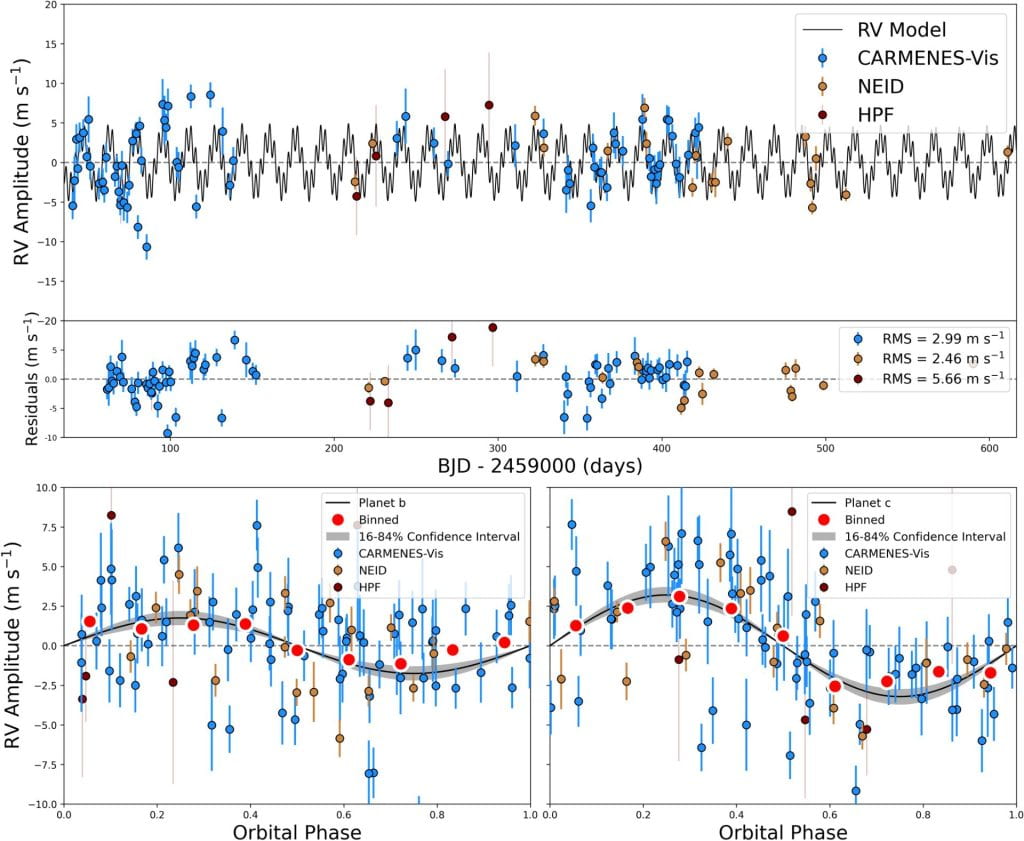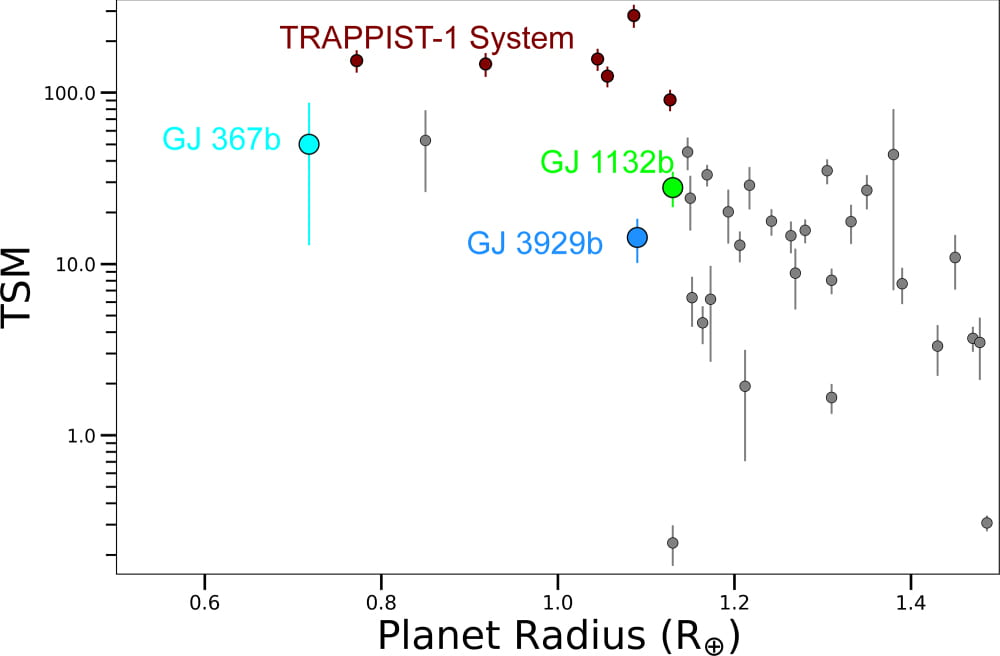Despite challenges caused by a global pandemic, the NEID team has adapted, and is already putting out important new exoplanet science. Much of the early science efforts with NEID have focused on detailed characterization of new exoplanets discovered by the Transiting Exoplanet Survey Satellite, or TESS. One of the first planets we studied was an Earth-sized planet orbiting a small nearby star. The results of this study were detailed in a recent publication in the Astrophysical Journal led by NEID team member Corey Beard. Our results were also recently highlighted by AAS Nova, a blog that features novel and exciting new papers appearing in the American Astronomical Society Journals Here, we will look at the highlights of this exciting planet system!
What’s Up With GJ 3929?
Thanks to the TESS mission, we were notified that Gliese (pronounced glees-y, and abbreviated as GJ) 3929, a cooler, redder star known as an M dwarf, might be hosting an exoplanet we hadn’t known about before. This candidate planet was reported to be about the size of Earth, but don’t start preparing your vacation plans yet: revolving around its star every 2.6 days, the planet GJ 3929b is basking in a lot of stellar radiation. With a surface temperature more likely to be close to Venus than Earth, we dubbed GJ 3929b a potential exo-Venus.
While the NEID team began follow-up work to confirm the planet right away, the planet signal eluded us. Could this planet be much lighter than we had previously thought, or was something else at play? It turned out to be the latter, which we discovered when the CARMENES team released an analysis that highlighted the transiting planet and a previously unseen non-transiting companion. Most likely, the mixing of the two signals confused our initial results, but with new data, a 2 planet model, and the extremely high precision of NEID, we were positioned to dive deeper into this system than had been done before.

A combination of radial velocity data taken by CARMENES, HPF, and NEID reveal the characteristic sine-wave-like shape of GJ 3929’s two planets.
If There’s an Atmosphere, We’ll Find It!
After the successful launch of the James Webb Space Telescope (JWST), many exoplanets are being framed in the context of atmospheric characterization: how easy is it to look at them with JWST and pick apart the chemicals in their atmosphere?

We highlight a few planetary systems with a high Transit Spectroscopy Metric, or TSM. Planets with higher TSMs are easier to observe with JWST to characterize their atmospheres. Note that very few planets are as small as GJ 3929b, and yet still suitable for study with JWST.
Luckily, GJ 3929b is an extremely good target for JWST. Many factors can make transiting exoplanets favorable (or not) for atmospheric characterization, but for the most part a bigger planet, a smaller star, and a close distance to Earth all go a long way to make a planet feasible. The star GJ 3929 is on the small and close side, which helps make it possible. But the planet GJ 3929b is Earth-sized, which is definitely small when it comes to exoplanets. So why is it good for JWST then? Well, it’s true that if GJ 3929b were, say, Jupiter sized, it would be much easier to study with JWST. But it would be much less interesting, as we already have the capability of studying the atmospheres of hot Jupiters. What makes GJ 3929b great for JWST is that it is a small planet that can be studied with JWST; most cannot!
While it’s too early to say whether or not GJ 3929b has an atmosphere or not, it is perfectly plausible. Current models of planet formation allow for a primordial atmosphere that appeared with the planet when it first formed, or an atmosphere that appeared later by volatile gases leaking out of the inside of the planet. Of course, it is also possible that the planet has no atmosphere at all. Time will tell what kind of environment ends up existing on GJ 3929b!
